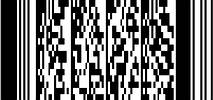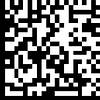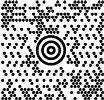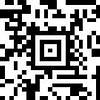

The Harmonic Group has been around for almost 20 years specialising in mobile solutions and bar coding, which became a focal point of the company’s offerings nine years ago when it was asked to source or develop a failproof input method for the mining industry to set up explosion sequences and have traceability of the detonators that failed. Explosions timings were absolutely critical and bar code proved to be an exact input method for this requirement.
"As far as technology behind bar coding goes, South Africa is up with European and USA technology," says Harmonic Group managing director Barry Beatu. "Unfortunately no standards get set in South Africa, but rather we follow the European community European Automated Numbers Association. This has some use in that locally manufactured production labels fit in with European and American standards."

Beatu says that bar coding has become more sophisticated with stacked and 2D bar codes allowing for large volumes of data to be embedded in the bar code. Also linear bar codes have for some industries become more compact with symbologies such as RSS (reduced space symbology) which was designed around the healthcare industry and specifically for ampoules, allowing not just stock code but also lot number and expiry date all embedded in one linear bar code less than 10 mm in length. "We supply hardware components, develop software applications to run on the hardware, and also provide the project management needed for the implementation of the solution," he explains.
How does 2D bar coding work?
There are various 2D bar code standards each of which work in different ways...
PDF417 is a high density 2-dimensional bar code symbology that essentially consists of a stacked set of smaller bar codes. The symbology is capable of encoding the entire (255 character) ASCII set (ASCII is the American Standard Code for Information Interchange, a code for representing English characters as numbers, with each letter assigned a number). PDF stands for 'portable data file' because it can encode as many as 2725 data characters in a single bar code. The complete specification for PDF417 provides many encoding options including data compaction options, error detection and correction options, and variable size and aspect ratio symbols. The symbology was published by Symbol Technologies to fulfil the need for higher density bar codes. The low level structure of a PDF417 symbol consists of an array of code words (small bar and space patterns) that are grouped together and stacked on top of each other to produce the complete printed symbol. An individual code word consists of a bar and space pattern 17 modules wide. The user may specify the module width, the module height, and the overall aspect ratio (overall height to width ratio) for the complete symbol. A complete PDF417 symbol consists of at least three rows of up to 30 code words and may contain up to 90 code word rows per symbol with a maximum of 928 code words per symbol.

The code words in a PDF417 symbol are generated using one of three data compaction modes currently defined in the symbology specifications. This allows more than one character to be encoded into a single data code word. Because different data compaction algorithms may be used, it is possible for different printed symbols to be created from the same input data. The symbology also allows for varying degrees of data security or error correction and detection. Nine different error correction levels are available with each higher level adding additional overhead to the printed symbol.
BPO 4 State Code (British Post Office, Royal Mail Code)
BPO (British Post Office) 4 State Code is a new postal bar code symbology that has been developed by the British Post Office for encoding European postcode data similar to the way the US PostNET symbology is used for encoding Zip Code data. At the time of this writing, the BPO 4 State Code has not been officially adopted as the standard for European postal applications, however it is anticipated that it will be sanctioned sometime in 1995. The goal of BPO 4 State Code is to provide European countries with a simple and efficient postal bar coding scheme.

The US PostNET symbology encodes numeric characters in a pattern of four bars per character with each bar being either tall or short (ie, two possible 'states' for each bar). The US technique thus allows for up to 16 different possible bar patterns for each set of four bars and is adequate for encoding the 10 digits zero through nine. Because European postcodes contain both alpha and numeric characters, (thus requiring a minimum of 36 different possible patterns for the characters A-Z and 0 to 9), each character in the BPO 4 State Code is encoded into four bars with each bar having four possible 'states'. The four states are: tall bars, short bars, medium height bars extended up from the middle of the symbol and medium height bars extended down from the middle of the symbol. In theory, the BPO 4 State Code is capable of encoding up to 128 different characters, however, only the characters A through Z and 0 to 9 have been assigned unique bar patterns.
BPO 4 State Code is a fixed dimension symbology meaning that the height, width and spacing of all bars must fit within exact tolerances.
Data Matrix
Data Matrix is a high density 2-dimensional matrix style bar code symbology that can encode up to 3116 characters from the entire 256 byte ASCII character set. The symbol is built on a square grid arranged with a finder pattern around the perimeter of the bar code symbol.

There are two types of Data Matrix symbols each using a different error checking and correction scheme (ECC). The different types of Data Matrix symbols are identified using the terminology 'ECC' followed by a number representing the type of error correction that is used by the encoding software. ECC 000 to ECC 140 are the original type of Data Matrix symbols and are now considered obsolete. The newest version of Data Matrix is called ECC 200 and is recommended for all new Data Matrix applications. The ECC 200 version of Data Matrix uses a much more efficient algorithm for encoding data in a symbol as well as an advanced error checking and correction scheme.
MaxiCode
MaxiCode is a fixed size matrix style symbology which is made up of offset rows of hexagonal modules arranged around a unique bulls-eye finder pattern. Each MaxiCode symbol has 884 hexagonal modules arranged in 33 rows with each row containing up to 30 modules. The maximum data capacity for a MaxiCode symbol is 93 alphanumeric characters or 138 numeric characters. The symbology was designed by United Parcel Service for package tracking applications. The design of the MaxiCode symbology was chosen because it is well suited to high speed, orientation independent scanning. Although the capacity of a MaxiCode symbol is not as high as other matrix style barcode symbologies, it was primarily designed to encode address data which rarely requires more than about 80 characters.

MaxiCode symbols actually encode two separate messages - a Primary message and a Secondary message. The Primary message normally encodes a postal code, a three-digit country code and a 3 digit class of service number. The Secondary message normally encodes address data and any other required information.
Aztec Code
Aztec Code is a high density 2-dimensional matrix style bar code symbology that can encode up to 3750 characters from the entire 256 byte ASCII character set. The symbol is built on a square grid with a bulls-eye pattern at its centre. Data is encoded in a series of 'layers' that circle around the bulls-eye pattern. Each additional layer completely surrounds the previous layer thus causing the symbol to grow in size as more data is encoded yet the symbol remains square. Aztec's primary features include: a wide range of sizes allowing both small and large messages to be encoded, orientation independent scanning and a user selectable error correction mechanism.

The smallest element in an Aztec symbol is called a 'module' (ie, a square dot). The module size and the amount of error correction are the only 'dimensions' that can be specified for an Aztec symbol and both are user selectable. It is recommended that the module size should range between 15 to 30 mils in order to be readable by most of the scanners that are currently available.
The overall size of an Aztec symbol is dependent on the module size, the total amount of encoded data and also on the level of error correction capacity chosen by the user. The smallest Aztec symbol is 15 modules square and can encode up to 14 digits with 40% error correction. The largest symbol is 151 modules square and can encode 3000 characters or 3750 numeric digits with 25% error correction.
"In the retail environment, 2D is useful for an outer pack or pallet where there may be a lot of detail required in one code such as expiry date, batch number, unique tracking reference, weight etc, as well as stock code," says Beatu. "Bar coding will continue to develop around new symbologies that are easier to read and more forgiving where the label has been damaged. With new bar code readers that are imagers (cameras) rather than lasers, the reading process can take in the bar code data, read the total label and even at the same time take a picture of the person receiving the package."
Beatu believes bar code technology will be around for many years to come, adding that although it is under some attack from transponder (RFID) technology, a bar code is cheap (only the cost of the ink) and works in most environments. "We can now embed bar codes into aluminium and print bar codes on material that will survive furnaces. We even have bar code labels with rip off covers like the visors of Formula One racing drivers so that after a paint process the next rip off is stripped off to display the bar code again."
Bar code graphics from TAL Technologies website at www.taltech.com
For more information contact Barry Beatu, Harmonic Group, 011 887 3333.

© Technews Publishing (Pty) Ltd. | All Rights Reserved.